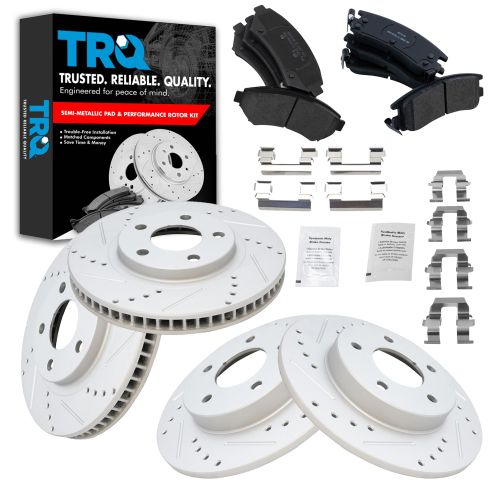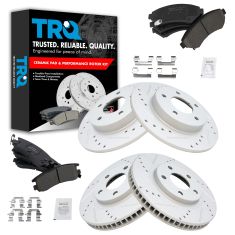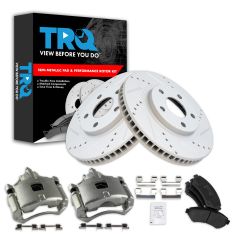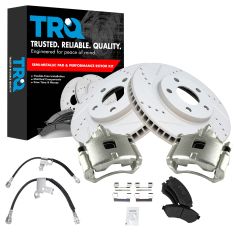1APBS00463-Buick Cadillac Pontiac Olds Front & Rear Semi-Metallic Performance Brake Pad & Rotor Kit TRQ Performance BKA12371

Replaces
1997 Cadillac Deville with 5 Lug Wheels with Rear Disc Brakes Front & Rear Semi-Metallic Performance Brake Pad & Rotor Kit TRQ Performance BKA12371

Product Reviews
Loading reviews
5.00/ 5.0
2
2 reviews
Nice brakes nice price
April 11, 2019
Nice parts nice packaging easy install. Once again 1aauto with the best deal
Easy Upgrade
July 3, 2020
Great upgrade to wife's buick. Fast shipping and everything I needed to do a quick brake job!
Customer Q&A
Will these fit the 1997 Buick park avenue Ultra ?
August 12, 2020
10
Yes, according to the information you provided, this part will fit your vehicle. Please let us know if you have any other questions!
August 12, 2020
Emma F
Will this fit a 2002 Cadillac DeVille?
August 25, 2021
10
This part will not fit your vehicle, but we may have a part that is listed to fit.
Please enter your vehicle's year make and model in the search bar at the top of the page. This will display parts guaranteed to fit your vehicle. Just be sure to verify all of the information shown in the Vehicle Fit tab before ordering.
August 25, 2021
Ricale A
Cadillac is a registered trademark of General Motors Company. 1A Auto is not affiliated with or sponsored by Cadillac or General Motors Company.
See all trademarks.



















